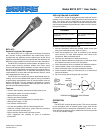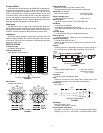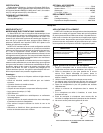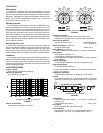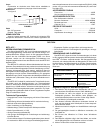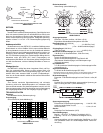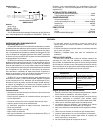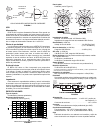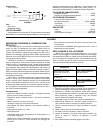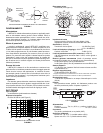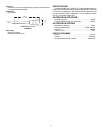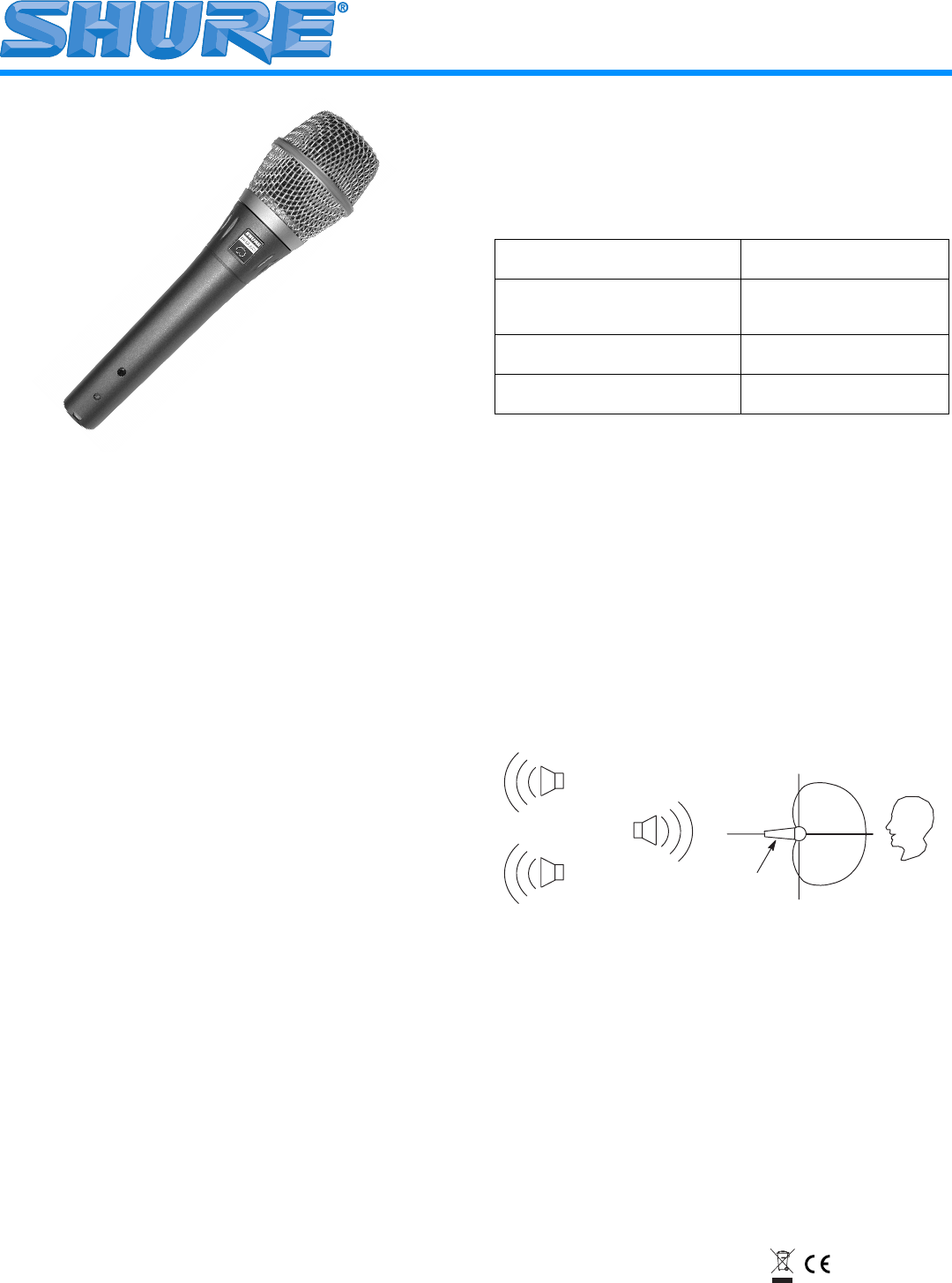
Model BETA 87C™ User Guide
©2006, Shure Incorporated
27C3109 (Rev. 4)
Printed in U.S.A.
BETA 87C™
Cardioid Condenser Microphone
The Shure BETA 87C is a high output condenser microphone
that provides touring professionals with studio-quality sound.
Vocalists who use earphone monitor systems such as the Shure
PSM
®
Personal Monitor System will appreciate how effectively the
BETA 87C rejects ambient sound from the rear of the microphone.
The BETA 87C maintains its cardioid pattern throughout its fre-
quency range, ensuring maximum isolation from other sound
sources and high gain before feedback. Its warm, natural sound is
the result of an exceptionally smooth frequency response that in-
cludes a slight presence rise. A controlled low-frequency roll-off
compensates for proximity effect and prevents the “boomy“ sound
often associated with close-up use.
The BETA 87C is an excellent choice for professional studio re-
cording, yet it is built to withstand the rigors of touring. It maintains
its performance characteristics even at sound pressure levels as
high as 139 dB SPL. Plus, the cartridge is protected by a proven
shock mount system. A hardened steel mesh grille with a built-in
pop filter provides added protection.
Features:
• Smooth, wide frequency response with slight presence rise
• Cardioid polar pattern for maximum isolation
• Minimal off-axis tone coloration
• Superior gain before feedback
• Low-frequency roll-off compensates for proximity effect
• Wide dynamic range (117 dB)
• Low distortion characteristics
• Very low susceptibility to RFI and electromagnetic hum
• Advanced cartridge shock-mount system absorbs mechanical
shocks and reduces handling noise
• Built-in pop filter reduces wind and breath sounds
• Shure ruggedness and reliability for years of trouble-free
performance
APPLICATION AND PLACEMENT
The BETA 87C is ideal for applications where earphone monitor
systems such as the Shure PSM
®
personal monitor systems are
used. Tone quality will vary, depending on how close the micro-
phone is to the sound source. Keep in mind that microphone tech-
nique is largely a matter of personal taste–-there is no one “correct”
microphone position.
General Rules for Microphone Use
1. Aim the microphone toward the desired sound source and
away from unwanted sources. Refer to Figure 1.
2. Place the microphone as close as practical to the desired
sound source. For extra bass response, work close to the
microphone. Refer to the table above.
3. Use only one microphone for each sound source.
4. Keep the distance between microphones at least three times
the distance from each source to its microphone.
5. Place microphones as far as possible from reflective surfaces.
6. Use the fewest number of microphones as is practical.
7. Add a windscreen when using the microphone outdoors.
8. Avoid excessive handling to minimize pick up of mechanical
noise and vibration.
9. Do not cover any part of the grille with your hand.
CARDIOID MICROPHONE POSITIONING
FIGURE 1
OPERATION
Power
The BETA 87C requires phantom power. This may be supplied
to the microphone from an external power supply (such as the
Shure model PS1A) or directly from preamplifiers, mixers, or con-
soles with built-in phantom power. Suitable sources should provide
11 to 52 Vdc phantom voltage.
SUGGESTED MICROPHONE
PLACEMENT
TONE QUALITY
Lips less than 15 cm (6 in.) away or
touching the windscreen, on axis to
microphone.
Robust sound, emphasized
bass, maximum isolation from
other sources.
15 to 60 cm (6 in. to 2 ft.) away from
mouth, just above nose height.
Reduced bass.
More than 60 cm (2 ft.) away. Thinner, distant sound; notice-
able levels of ambient noise.
180°
90°
0°
90°
STAGE
MONITOR
P.A.
LOUDSPEAKERS
MICROPHONE
SOUND
SOURCE



